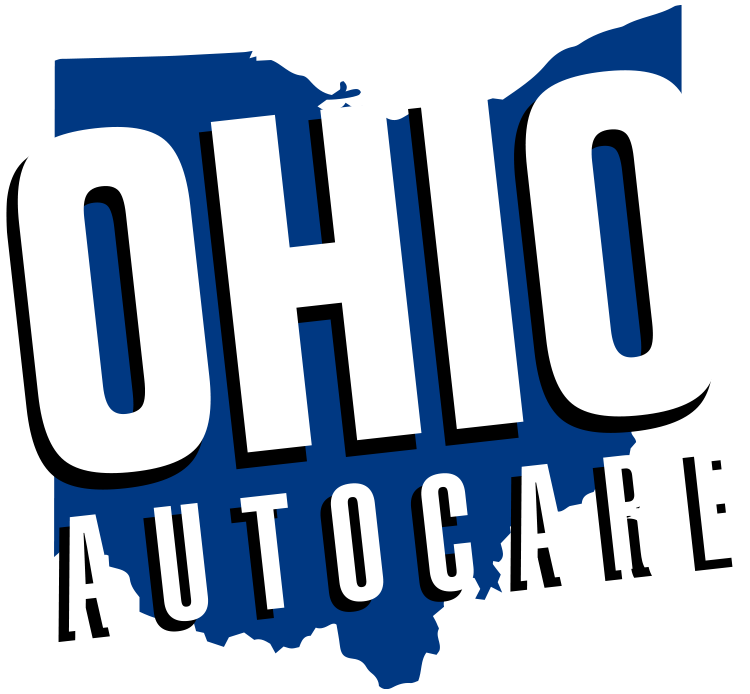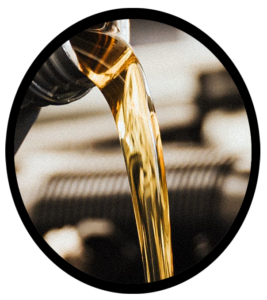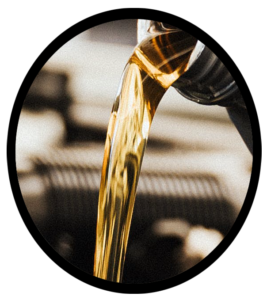





 CERTIFIED Mechanics
CERTIFIED Mechanics 
CERTIFIED Mechanics
Conventional & Synthetic Oil Changes
For your next conventional or synthetic auto motor oil change, call your local Ohio Autocare Service Shop. Our trained and certified auto mechanics have extensive experience with virtually all makes and models of cars, trucks, minivans, commercial fleet vehicles and more.
We use premium quality automotive parts and supplies, including conventional and synthetic motor oil brands for our motor oil change customers. We have convenient Ohio locations in Columbus Eastland, Hilliard, Cincinnati Kenwood, and Loveland.
One of the most critical elements of your car’s periodic maintenance tune up is an oil change. When driving, the oil courses through the car engine and picks up trace amounts of combustion deposits, metal slivers and other foreign materials. As the oil ages, it becomes more contaminated and increasingly diminishes the oils ability to perform at optimal efficiency.
Motor Oil Change Service
For auto conventional and synthetic motor oil changes, call one of the Ohio Autocare locations near you. We have convenient locations located in Columbus Eastland, Hilliard, Cincinnati Kenwood, and Loveland.
You can also click the auto shop below for our convenient online scheduling app.
Conventional & Synthetic Motor Oil Changes
 Humans have long known the value of lubrication with moving parts, using olive oil and animal fat to lubricate the wooden cart and wagon wheels. But as the metal machines of the industrial revolution began to emerge, lubricants were needed that could provide protection under greater speeds and temperatures.
Humans have long known the value of lubrication with moving parts, using olive oil and animal fat to lubricate the wooden cart and wagon wheels. But as the metal machines of the industrial revolution began to emerge, lubricants were needed that could provide protection under greater speeds and temperatures.When a car is shut off, accumulated oil from various engine components drain into the oil pan. When the car is turned back on, the oil pump pulls oil through a filter from the oil pan. The oil then goes straight to the oil filter where smaller contaminants are removed before moving on to the various engine components, like the pistons, cam and bearings. As more oil is pumped in, the excess oil drains down and back into the oil pan to complete the cycle.
The oil filter removes most of the larger elements, but over time smaller elements that are able to slip through the oil filter becomes more saturated, degrading the oil’s ability to provide adequate protection.
The main function of motor oil is to reduce the friction of the interacting metal components within the engine. But oil is more than just a lubricant. In addition to reducing friction, the oil also helps dissipate engine heat. Exposed metal is more vulnerable oxidation and motor oil forms a protective coating. The motor oil also serves as a cleaning agent, encasing foreign objects and advancing them to the filter to be removed from the system.
Today, there are four types of motor oil available: conventional; synthetic; synthetic blend; and high-mileage. All motor oils start with a base oil with conventional oil using petroleum while synthetic oil uses polymers. Additives are mixed in to provide various performance benefits.
 Conventional Motor Oil
Conventional Motor OilConventional motor oil has been used for years and uses a petroleum-based oil. It’s still used today as an ideal engine lubricant for less demanding driving conditions.
Synthetic Motor Oil
Synthetic motor oil is specifically formulated using oils derived from polymers. Synthetic motor oil provides substantially greater protection than conventional motor oil with a greater performance range. Synthetic motor oil is ideal for more demanding driving conditions.
Synthetic Blend Motor Oil
As the name implies, synthetic blend motor oil is a mixture of conventional crude oil and synthetic motor oil. This motor oil provides many of the benefits of full synthetic motor oil for less money.
High-Mileage Motor Oil
For automobiles with over 75,000 miles or older cars, high-mileage motor oil is formulated with additives to seal holes and gaps to reduce leaks and contamination.
 Humans have long known the value of lubrication with moving parts, using olive oil and animal fat to lubricate the wooden cart and wagon wheels. But as the metal machines of the industrial revolution began to emerge, lubricants were needed that could provide protection under greater speeds and temperatures.
When a car is shut off, accumulated oil from various engine components drain into the oil pan. When the car is turned back on, the oil pump pulls oil through a filter from the oil pan. The oil then goes straight to the oil filter where smaller contaminants are removed before moving on to the various engine components, like the pistons, cam and bearings. As more oil is pumped in, the excess oil drains down and back into the oil pan to complete the cycle.
The oil filter removes most of the larger elements, but over time smaller elements that are able to slip through the oil filter becomes more saturated, degrading the oil’s ability to provide adequate protection.
The main function of motor oil is to reduce the friction of the interacting metal components within the engine. But oil is more than just a lubricant. In addition to reducing friction, the oil also helps dissipate engine heat. Exposed metal is more vulnerable oxidation and motor oil forms a protective coating. The motor oil also serves as a cleaning agent, encasing foreign objects and advancing them to the filter to be removed from the system.
Today, there are four types of motor oil available: conventional; synthetic; synthetic blend; and high-mileage. All motor oils start with a base oil with conventional oil using petroleum while synthetic oil uses polymers. Additives are mixed in to provide various performance benefits.
Humans have long known the value of lubrication with moving parts, using olive oil and animal fat to lubricate the wooden cart and wagon wheels. But as the metal machines of the industrial revolution began to emerge, lubricants were needed that could provide protection under greater speeds and temperatures.
When a car is shut off, accumulated oil from various engine components drain into the oil pan. When the car is turned back on, the oil pump pulls oil through a filter from the oil pan. The oil then goes straight to the oil filter where smaller contaminants are removed before moving on to the various engine components, like the pistons, cam and bearings. As more oil is pumped in, the excess oil drains down and back into the oil pan to complete the cycle.
The oil filter removes most of the larger elements, but over time smaller elements that are able to slip through the oil filter becomes more saturated, degrading the oil’s ability to provide adequate protection.
The main function of motor oil is to reduce the friction of the interacting metal components within the engine. But oil is more than just a lubricant. In addition to reducing friction, the oil also helps dissipate engine heat. Exposed metal is more vulnerable oxidation and motor oil forms a protective coating. The motor oil also serves as a cleaning agent, encasing foreign objects and advancing them to the filter to be removed from the system.
Today, there are four types of motor oil available: conventional; synthetic; synthetic blend; and high-mileage. All motor oils start with a base oil with conventional oil using petroleum while synthetic oil uses polymers. Additives are mixed in to provide various performance benefits.
 Conventional Motor Oil
Conventional motor oil has been used for years and uses a petroleum-based oil. It’s still used today as an ideal engine lubricant for less demanding driving conditions.
Synthetic Motor Oil
Synthetic motor oil is specifically formulated using oils derived from polymers. Synthetic motor oil provides substantially greater protection than conventional motor oil with a greater performance range. Synthetic motor oil is ideal for more demanding driving conditions.
Synthetic Blend Motor Oil
As the name implies, synthetic blend motor oil is a mixture of conventional crude oil and synthetic motor oil. This motor oil provides many of the benefits of full synthetic motor oil for less money.
High-Mileage Motor Oil
For automobiles with over 75,000 miles or older cars, high-mileage motor oil is formulated with additives to seal holes and gaps to reduce leaks and contamination.
Conventional Motor Oil
Conventional motor oil has been used for years and uses a petroleum-based oil. It’s still used today as an ideal engine lubricant for less demanding driving conditions.
Synthetic Motor Oil
Synthetic motor oil is specifically formulated using oils derived from polymers. Synthetic motor oil provides substantially greater protection than conventional motor oil with a greater performance range. Synthetic motor oil is ideal for more demanding driving conditions.
Synthetic Blend Motor Oil
As the name implies, synthetic blend motor oil is a mixture of conventional crude oil and synthetic motor oil. This motor oil provides many of the benefits of full synthetic motor oil for less money.
High-Mileage Motor Oil
For automobiles with over 75,000 miles or older cars, high-mileage motor oil is formulated with additives to seal holes and gaps to reduce leaks and contamination. 